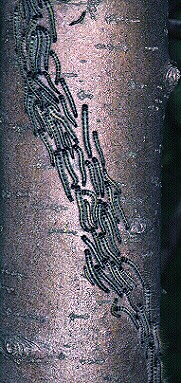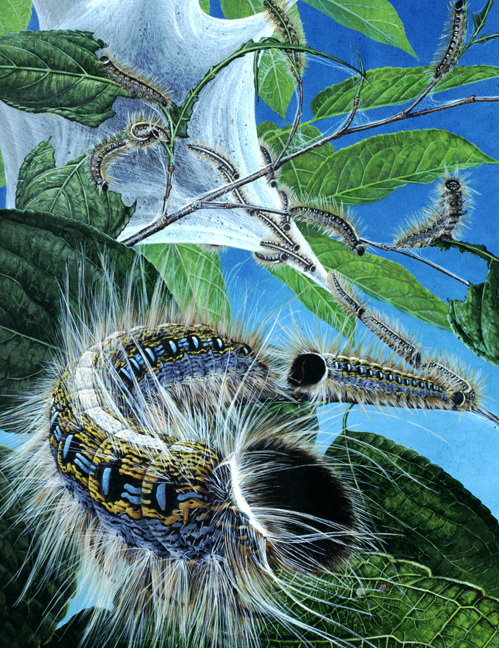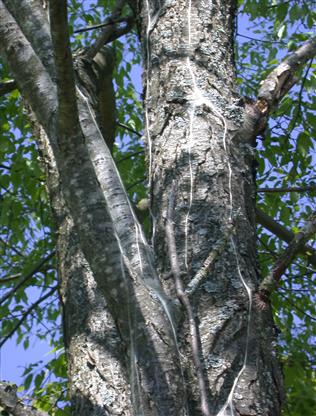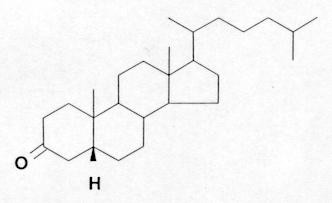Tent caterpillars secrete silk from a spinnert located on the undersides of their heads and frequently used pathways are soon covered with the material. As the caterpillars move about the tree, they gaining secure purchase by largely confine their movements to these pathways.
Caterpillars deposit exploratory trails by dragging the tip of their abdomen as they move over the tree in search of food. Caterpillars that find food and feed overmark the exploratory trails they follow back to the tent, creating recruitment trails. Recruitment trails are much more attractive to the caterpillars than exploratory trails and they serve to lead hungry caterpillars directly to the newest food-finds. It is possible for a single successful forager to recruit the entire colony to its food-find.
In addition to silk, the caterpillars secrete a trail pheromone from the undersides of the tips of their bodies to mark pathways that lead to the tent or to food. The steroid 5b-cholestane-3-one readily elicits trial following and the caterpillars will leave their own authentic trails in favor of artificial trails prepared with the compound.
Under field conditions, the caterpillars feed typically three times each day, just before dawn, at mid-afternoon, and in the evening after sunset. During each bout of feeding the caterpillars emerge from the tent, add silk to the structure, move to distant feeding sites en masse, feed, then return immediately to the tent where they rest until their next activity period. The exception to this pattern occurs in the last instar when the caterpillars feed only at night. The caterpillars lay down pheromone trails to guide their movements between the tent and feeding sites. Painting by Edward Rooks
Trail Marking and Recruitment to Food-Finds
Eastern tent caterpillars moving along a branch between their tent and feeding sites






